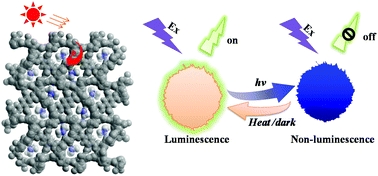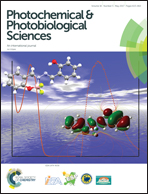An electron-transfer photochromic crystalline MOF accompanying photoswitchable luminescence in a host–guest system†
Abstract
A new electron transfer type photoactive host–guest supramolecule was constructed by introducing (CH3)2NH2+ cations to the MOF framework. The resulting compound 1 exhibits reversible photochromic property without using photochromic components, resulting from photoinduced electron-transfer between the electron-rich anionic framework and the electron-deficient guest ions. In addition, a photoluminescence “on/off switch” occurs during the coloration–decoloration process. The raw materials are non-poisonous and harmless, hence compound 1 may be more cost-effective, clean, and harmless to the heath than existing photochromic materials.



 Please wait while we load your content...
Please wait while we load your content...